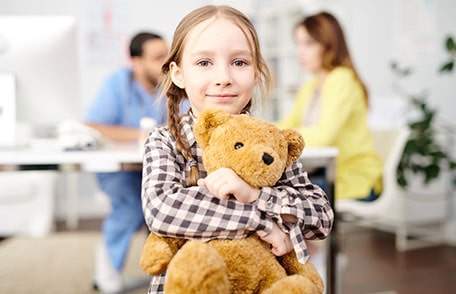By Susan Bernstein
Young children often are sidelined by illness or fatigue – the flu-like bug picked up from playmates at daycare, or the sore arm caused by a tumble on the playground. When symptoms like pain, stiffness or fevers occur at odd times, without obvious cause, could this mean juvenile arthritis (JA)? How can you tell the difference?
Traditionally, a child complaining of occasional achy joints was dismissed as having “growing pains,” a vague phenomenon believed to be the result of the natural growth process. Now, we know that symptoms of joint pain, swelling, stiffness, fatigue or illness may be early signals of a serious, inflammatory rheumatic disease that requires immediate medical treatment.
Several rheumatic diseases affect children, often those who are too young to speak about what’s bothering them. In such cases, it’s important not to assume these symptoms are temporary, and to get a proper diagnosis from your child’s pediatrician. Early drug treatment can prevent serious, permanent damage to your child’s joints and enable to him/her to live an active, full childhood despite juvenile arthritis.
Common Signs of Juvenile Arthritis
The most common type of juvenile arthritis is juvenile idiopathic arthritis, formerly known as juvenile rheumatoid arthritis. Children as young as two may be affected. Other rheumatic diseases affecting children include juvenile dermatomyositis, juvenile psoriatic arthritis, systemic lupus erythematosus and systemic arthritis, or Still’s disease. In these diseases, a child’s immune system malfunctions for some reason, attacking her body instead, especially her joints. Here are the common symptoms of juvenile arthritis, and why they are different from symptoms caused by other illnesses or injury.

- Pain: Kids complain of pain in joints or muscles at times, particularly after a long day of strenuous activity. But a child with juvenile arthritis may complain of pain right after she wakes up in the morning or after a nap. Her knees, hands, feet, neck or jaw joints may be painful. Her pain may lessen as she starts moving for the day. Over-the-counter pain relief drugs like acetaminophen or ibuprofen may not help. Unlike pain caused by an injury or other illnesses, JA-related pain may develop slowly, and in joints on both sides of the body (both knees or both feet), rather than one single joint.
- Stiffness: A child with JA may have stiff joints, particularly in the morning. He may hold his arm or leg in the same position, or limp. A very young child may struggle to perform normal movements or activities he recently learned, like holding a spoon. JA-related stiffness may be worse right after he wakes up and improve as he starts moving.
- Swelling: Swelling or redness on the skin around painful joints is a sign of inflammation. A child may complain that a joint feels hot, or it may even feel warm to the touch. A child’s swelling may persist for several days, or come and go, and may affect her knees, hands and feet. Unlike swelling that happens right after a fall or injury during play, this symptom is a strong sign that she has juvenile arthritis.
- Fevers: While children commonly have fevers caused by ordinary infectious diseases like the flu, a child with JA may have frequent fevers accompanied by malaise or fatigue. These fevers don’t seem to happen along with the symptoms of respiratory or stomach infections. Fevers may come on suddenly, even at the same time of day, and then disappear after a short time.
- Rashes: Many forms of juvenile arthritis cause rashes on the skin. Many kids develop rashes and causes can range from poison ivy to eczema or even an allergic reaction to a drug. But faint, pink rashes that develop over knuckles, across the cheeks and bridge of the nose, or on the trunk, arms and legs, may signal a serious rheumatic disease. These rashes may not be itchy or oozing, and they may persist for days or weeks.
- Weight loss: Healthy, active children may be finicky about eating, refusing to eat because they say they’re not hungry or because they don’t like the food offered. Other children may overeat and gain weight. But if a child seems fatigued, lacks an appetite and is losing rather than gaining weight, it’s a sign that her problem could be juvenile arthritis.
- Eye problems: Eye infections like conjunctivitis (pinkeye) are relatively common in children, as they easily pass bacterial infections to each other during play or at school. But persistent eye redness, pain or blurred vision may be a sign of something more serious. Some forms of juvenile arthritis cause serious eye-related complications such as iritis, or inflammation of the iris and uveitis, inflammation of the eye’s middle layer.

Juvenile arthritis includes many different diseases, but one common thread between them is that they can have serious, even life-threatening impacts on a young child. Diagnosis by a physician can determine the cause of the symptoms, rule out injuries or other diseases, and suggest treatments that will ease symptoms and allow your child to return to school and resume playing with friends and enjoying childhood.
Originally published by the Arthritis Foundation; reprinted with permission. | Image credit: UCLA






